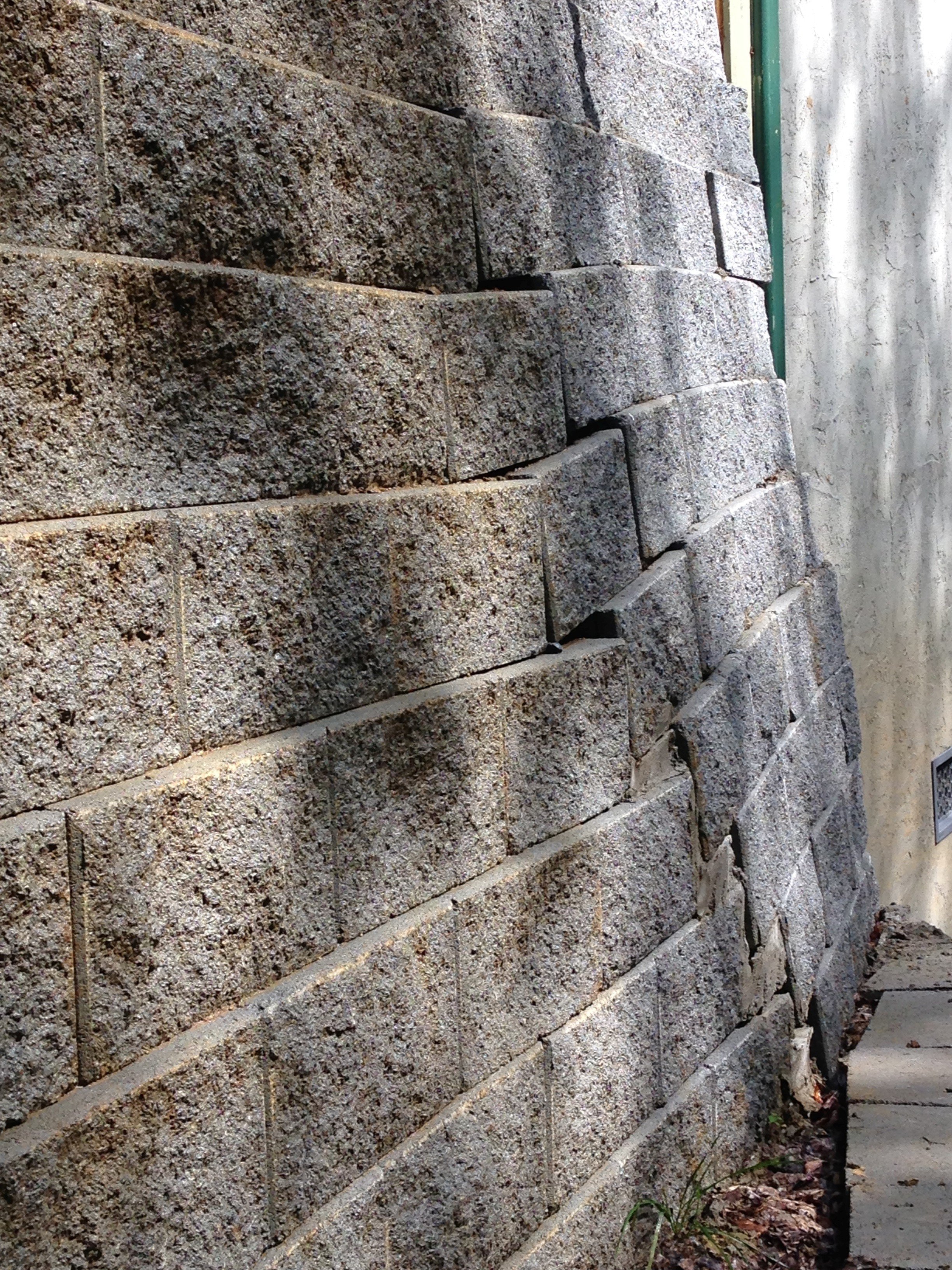The
Structure:
If you look out the back door of the majority of residences built in the high country, the chances that you will see a retaining wall are pretty high. Retaining walls are an extremely prevalent way of holding back soil. This particular one is a tiered segmental wall composed of 18” long by 8” wide staggered blocks with roughly a 7-degree batter. It is holding back 17 feet of soil with a drive way on top, and as you can see it’s having some problems.
The
Topography:
This retaining wall sits on a slight slope adjacent to the home and has a 4-foot wide tiered section between the two walls. However, in order to accommodate for the driveway and garage area the wall merges together at the corner interface, which puts heavy amounts of stress on the lower wall. As you can see it has begun to settle at the point where the walls come together.
The
Problem:
Being that the retaining wall is tiered, there should be a continuous distance of 4 feet between the top edge of the lower wall and the bottom edge of the upper wall, however at the point they come together, there is not enough solid ground for the upper wall to sit on.


Lesson Learned:
“Walls that retain should be built to remain”
-Retaining walls are one of the more simple structures to understand and build; however they are where the majority of structural problems occur. When building a retaining wall that is interfaced at the corner of a house such as this one, a few things need to be taken into consideration. The interface should be continuous all the way along the edge of the house. This particular retaining wall is battered therefore the bottom portion of the wall kicked out and not connected with the house, which causes sediment from behind to spill out. The sediment that has spilled out from behind the lower portion of the wall is the same material that should be supporting the wall above; settlement is only expected to occur at that point. In order to maintain a continuous interface between the house and the wall, the use of bigger size blocks is the answer. Another reason for the settlement in this wall is the improper placement of geogrid. The geogrid, which is a woven fabric layered between the blocks to hold fill material in place, was oriented in the weak direction and not in the strong direction.